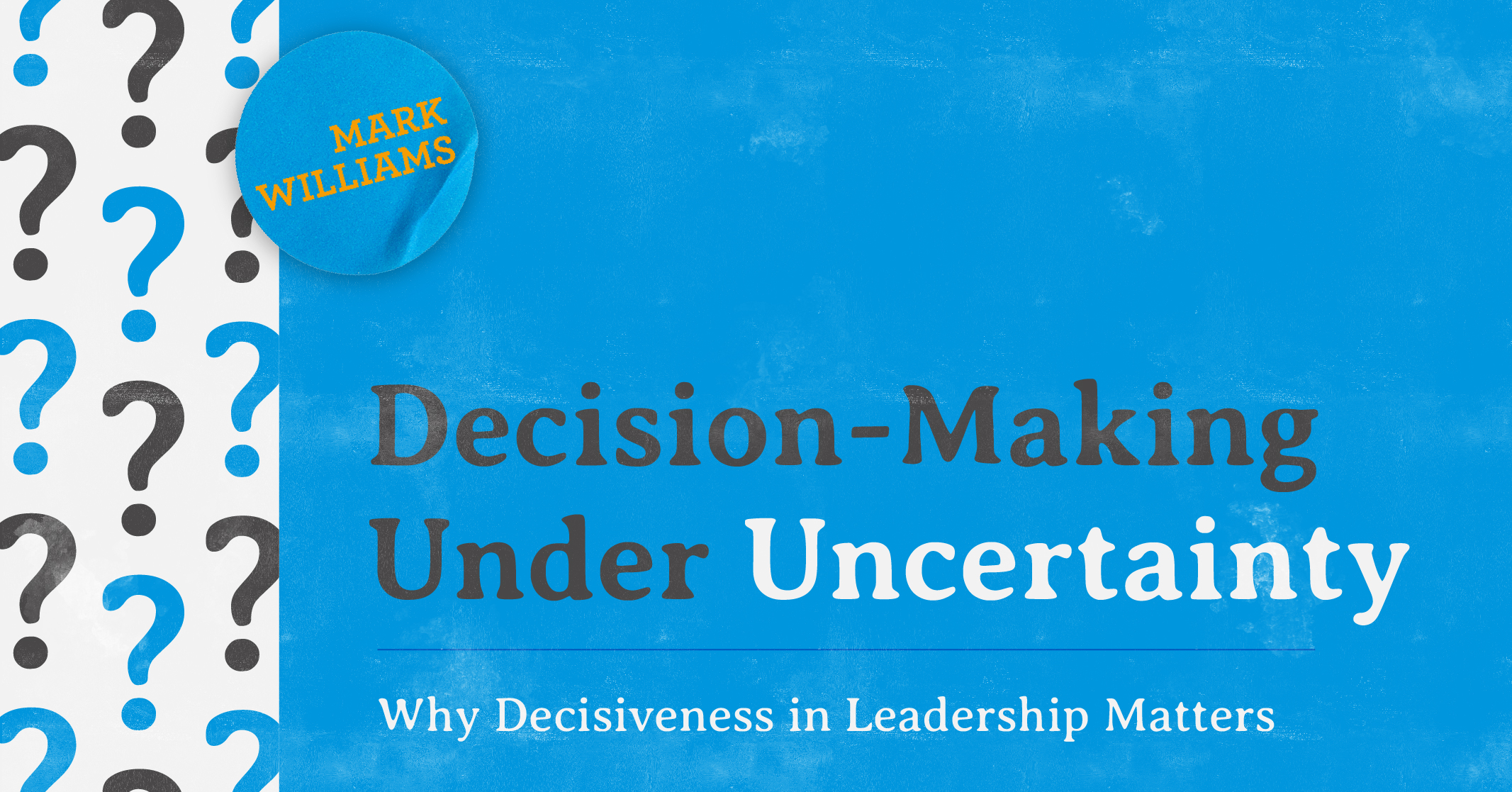Decision-making is a fundamental part of leadership and is often a key factor in determining success. But in today’s fast-paced and ever-changing environment (the global pandemic and the meteoric rise of AI are two recent examples) the task of decision-making under uncertainty can be daunting. However, great leaders must be willing to make decisions quickly and confidently, striving to avoid both bad decisions and the cost of indecision.
While it may seem like we’re operating in more uncertain times than in years past, decision-making under uncertainty has always been a necessary skill for leadership. Every generation has dealt with uncertainty — it just feels more prevalent as the world keeps moving faster.
Effective leaders must be willing to keep trying to make the best decisions they can with the information available to them in the moment, even if that means failing your way to success. How can leaders demonstrate the value of decisiveness — and encourage it in others? Through a willingness to embrace decision-making and cultivating an environment in which it’s safe to fail — with caveats. Decision-making under uncertainty is a risk every leader must take, constantly. Let me explain.
The Importance of Decision-Making
It’s critical for leaders to be decisive. A decisive leader inspires confidence in others and encourages teams to work toward a common goal. Decisive leaders attempt to stay nimble and push toward progress with the resources available to them. They never look back or sow doubt among their team.
But like I said, it’s a risk. Here’s something I wrote in my book (Lead, Don’t Manage) and tell myself all the time:
“Never forget that the only people who never make a bad decision are the ones who never make any decisions at all.”
Developing a decision-making mindset can help leaders become more confident in their decisions — and signal to their employees that it’s OK to take reasonable risks when facing uncertainty. Leaders should of course take care to consider all available information before making their decision, weighing the potential risks and benefits associated with each option.
Above all, be clear in your approach to making difficult decisions. When appropriate, share the inputs leading to the ultimate decision so others can understand what factors weighed on the decision-making process. Empower your employees to follow your example, letting them know you would rather they learn from a mistake than let an opportunity pass.
Leadership and Decision-Making
If you’re going to lead, you’re going to have to make decisions. A lot.
For the sake of progress in our increasingly fast world, you’ll sometimes:
- Make decisions quickly based on the available facts. Other times, you’ll have the opportunity to dig deeper, gather all relevant information, and ask your colleagues for more information or their perspective.
- Sometimes the answer will land in your lap, and other times you’re going to have to settle for “good enough.”
- Some decisions might take you to the promised land. Others might see you falling on a sword.
In a leadership role, all this is par for the course. But no matter what, don’t allow yourself to fall into the trap of second-guessing yourself with hindsight or allowing a mistake (or the possibility of a mistake) to paralyze you.
A Lesson on Making Bad Decisions
When you’re in the midst of making a decision, it’s crucial that you trust yourself. Regardless of how others view your decision, approach the process in a way that gives you the validation of knowing you gave it your best effort based on the available data. And remember, you’re in your role for a reason: because you have a history of demonstrating effective decision-making skills.
I sometimes see otherwise effective leaders get in their own way because they’re filled with fear about making the wrong decision. Don’t let yourself listen to doubt or fall victim to paralysis by analysis; you can almost always circumvent the effects of bad decisions.
And here’s how.
- Take ownership: Be human. Be human. Be human. Own up to your mistakes, with humor when appropriate, and share positive, empowering insights learned with your team so they can grow with you. Demonstrate your original thinking, how you will modify your plan, and what others can expect from you in the future if a similar scenario arises. Transparency will always earn you respect and trust — and boost morale.
- Use it to your advantage: Every step you take in life — even the bad ones (especially the bad ones) — gives you an incredible opportunity to learn and grow. Use it, log it in your brain, and allow it to make your next difficult decision a little bit easier.
- Keep your head down and keep moving forward: When you stop dwelling on a past mistake, everyone else will too. Remember, you’re the leader and you set the tone.
Not to sound contradictory but keep your head up. Cut yourself some slack and recognize that everyone makes mistakes and bad decisions at times.
I’ll leave you with another of my favorite lines from my book:
“Bad decisions are virtually inevitable and rarely obvious.”
Looking for more insight into how great leaders should approach tough decisions? Grab a copy of my book, Lead, Don’t Manage, to dig deeper.

